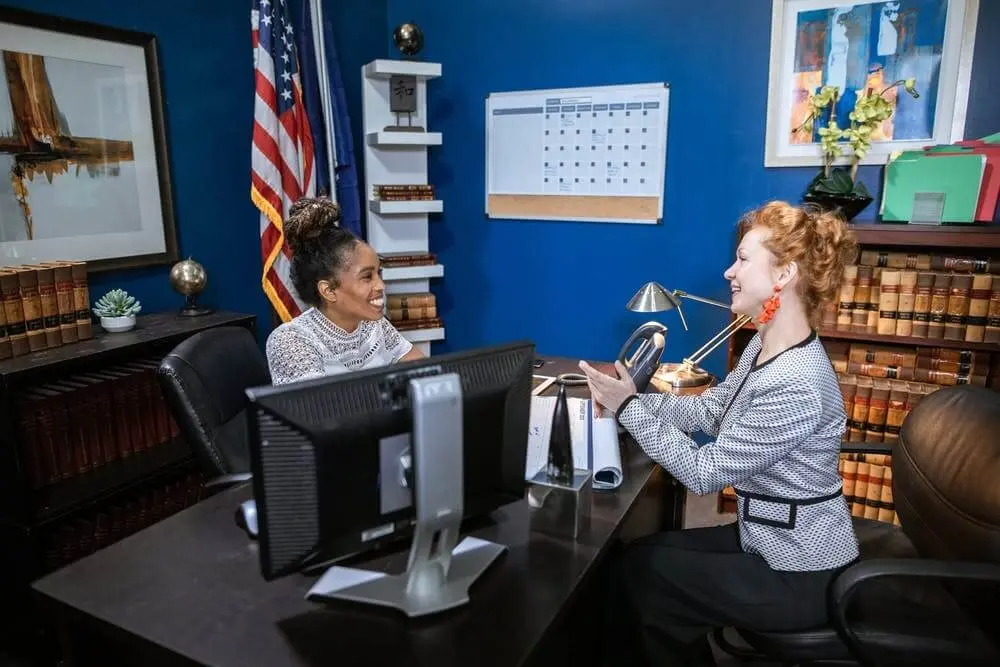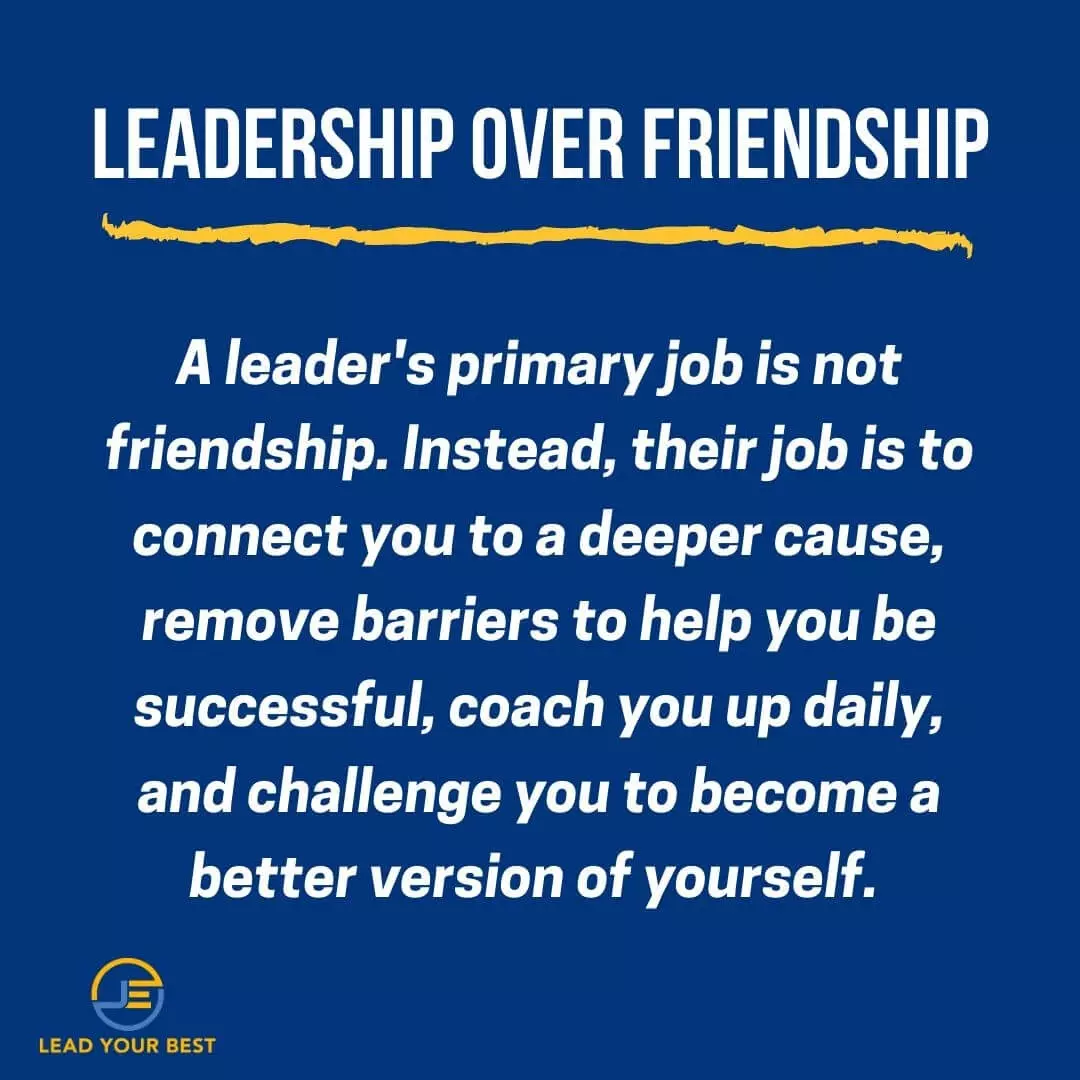Comments
- No comments found

Until you are a manager, you never really know the struggle of balancing friendship with leadership.
In one sense, friendship shouldn't even be on the radar, but on the other side of the coin, everyone wants to be liked, which puts leaders in a bit of a challenging position.
Anyone who has led or has studied the field of leadership development will tell you that building and maintaining quality relationships is a key to success. However, having the goal of being best friends first with every team member will hurt you.
This doesn't mean you or any leader should avoid or reject being friends with a team member. If a friendship grows, that is great, but that's not the purpose of leadership. If being friends with a team member becomes more important than doing what's in their or the team's best interest, your priorities are out of alignment.
If being friends with a team member becomes more important than doing what's in their or the team's best interest, your priorities are out of alignment.
Boundaries, respect, and trust are essential to the success of any relationship. For leaders, think, "friendly is essential; friendship isn't required."
It turns out; team members need healthy boundaries as well. Most professionals don't want or even need a friend in their boss, but they do have to know their manager cares about them.
Professionals don't need their manager to be a best friend, but they do have to know they care about them.
When you dig into friendship in the workplace deeper, it becomes less elusive identifying its five key components from research; (a)Affect (b) a Grand Project (c) Altruistic Reciprocity (d) Moral Obligations, (e) Equality.
In the workplace, one of these stands out, which is "a grand project." C. S. Lewis said, "lovers are normally face to face, absorbed in each other; Friends, side by side, absorbed in some common interest." Wikipedia defines friendship as a relationship of mutual affection between people. While there is nothing wrong with a platonic relationship between colleagues, the best leaders see the lines of friendship and leadership differently. They know their primary job is not friendship.
Instead, they know their job is to connect team members to a deeper cause, remove barriers to help them be successful, coach them up daily, and challenge them to become a better version of themselves.

If you have fallen too much into the "friend zone" as a manager or want to get back to leaning into the shared common interests with team members, here are some ideas.
No matter your business, there is a deeper purpose for why it exists. Maybe it's to make the lives of your clients better, or perhaps it's to transport joy around the world. Regardless of what it is, it's the leader's job to constantly reconnect people to the cause behind the work a team does.
While this might sound corny, it's not. By constantly talking about important things that matter, you elevate the conversation and relationship between the people you get the opportunity to lead.
To ensure leadership comes before friendship, it's a great idea to elevate the standard of what's expected to be a team member. A standard is defined as what good looks like. However, managers define what good looks like, leaders define what great looks like.
Your team's behavior will default to the standards that you demonstrate and define for them. Be crystal clear, concise, and conclusive. Limit yourself to as few standards as possible so they can be remembered and applied. If you struggle to set clear standards, ask yourself the following three questions:
What's the end result I want from my team?
What's stopping us from getting there?
What can be done instead?
The best way to demonstrate to team members that you are in your role to lead and not just be a friend is to help them perform at their best and be proactive in helping them reach their full potential. A great way to achieve this is to act as a coach for them.
Just think of the best sports coaches in the world. They are constantly looking for ways to bring out the best in their players and to help them get from where they are to where they want or need to be.
The best coaches help people get from where they are to where they want or need to be.
Arm yourself with a set of go-to coaching questions to get your people to think differently and solve their problems. Then, check out the Coaching for Excellence Program if you want to improve your coaching skills in less than 1 hour.
No one likes change, and there is a high likelihood you will be met with resistance or downright defiance. Be prepared and willing to follow up and follow through with your mindset of leadership over friendship.
I don't pretend this to be easy. In fact, you will be tempted to default to your old ways. Leaders aren't immune to resisting change, and the path of least resistance can be tempting. Reject this with all your heart, soul, and mind. As I wrote in Building the Best:
Only leaders who are tested become great.
Remember, it's your job to elevate others and improve performance over time, and it doesn't happen by accident.
What's interesting about this topic of friendship and leadership is there isn't only one correct way. I have had team members where real legitimate lifelong friendships developed because of our work together and others where it didn't. I am profoundly grateful for both.
However, as long as leaders keep the main thing, the main thing, and focus on leadership over friendship, our teams and our performance will be in a better place.
Do you agree?
John is the CEO of LearnLoft, author of, F.M.L. Standing Out & Being a Leader and host of the 'Follow My Lead' Podcast. He writes or has been featured on Inc.com, LinkedIn Pulse, TrainingIndustry.com, eLearningIndustry.com, CNBC Money, and more. John completed his education at the University of Maryland College.
Leave your comments
Post comment as a guest